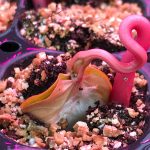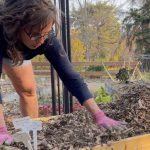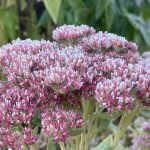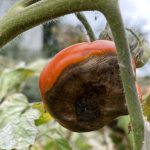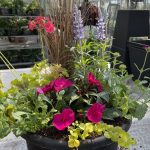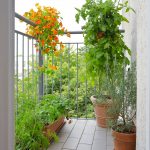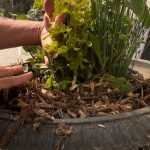Each growing season has its own personality, some can be really wet, and managing garden watering can be a little tricky when the rain lasts for an extended period of time.
Let’s talk about what to watch out for, how to assess your garden, and how to manage hydration in flowerbeds and planters.

Want the inside scoop on more gardening tips? Get early access to all my blogs and exclusive content by signing up for my newsletter!
1. How to Water Flowerbeds Under Roof Eves During Rainy Times
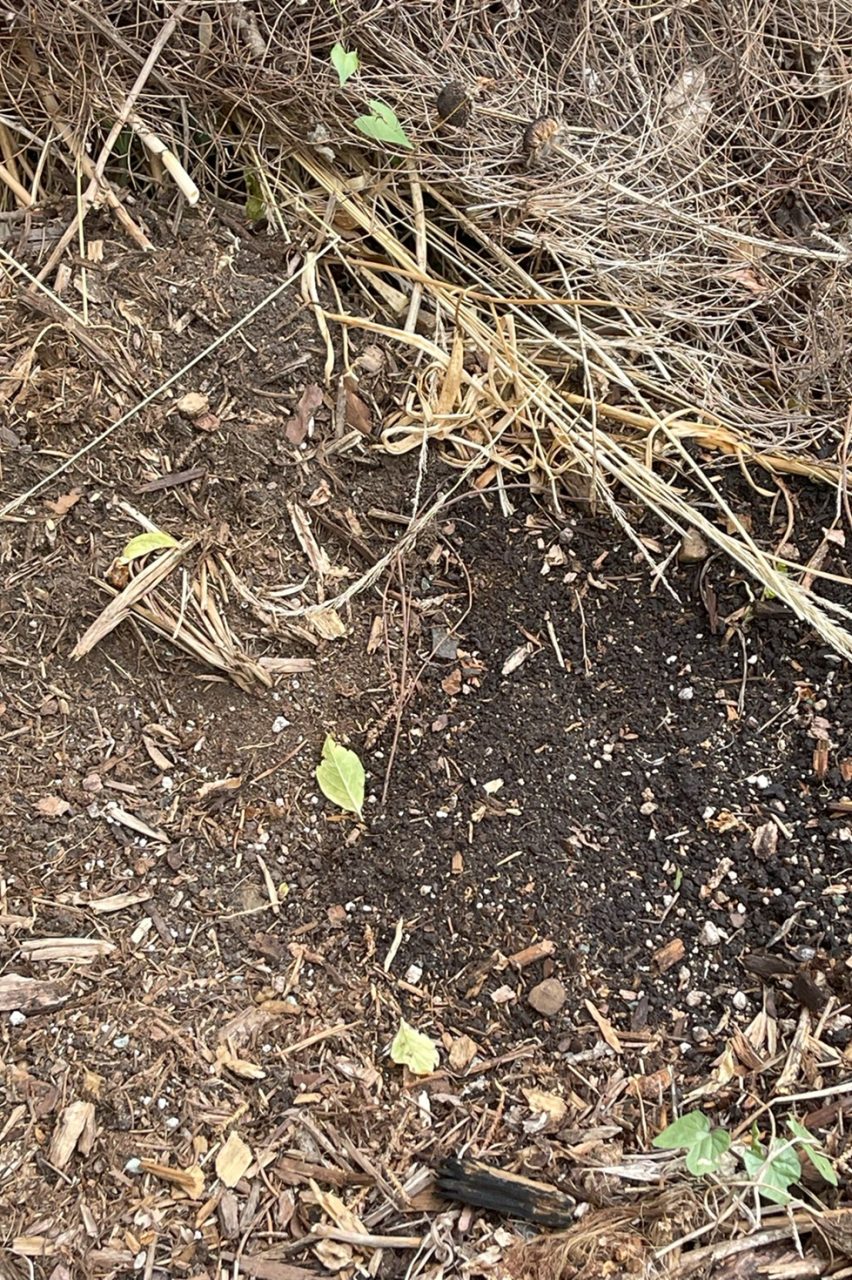
In-ground flowerbeds that lie snug against building walls offer a mixed bag of water catchment when it rains.
The exposed, front portion of the bed receives a nourishing drink of water, but the back segment lying directly under the roof eves gets nothing, receiving no benefit from the rain.
There often is a visible drip line in flowerbeds marking where the rain was absorbed.
Water does move slightly to the drier side but unfortunately not to the extent that we would wish and it is surprising how parched that dry segment can be.
In the case of flowerbeds next to a building, check the dry side of that rain line to determine hydration needs.
My go-to method for checking the water status of a garden bed is the stick the entire length of my index finger into the soil. If the soil is dry at the tip of my finger or at the first knuckle, that is a clear indication to me that the soil needs water.
Water that area well, even if feels incredibly weird because it is raining outdoors. The plants will thank you.
2. How to Water Planters and Containers When it’s Rainy
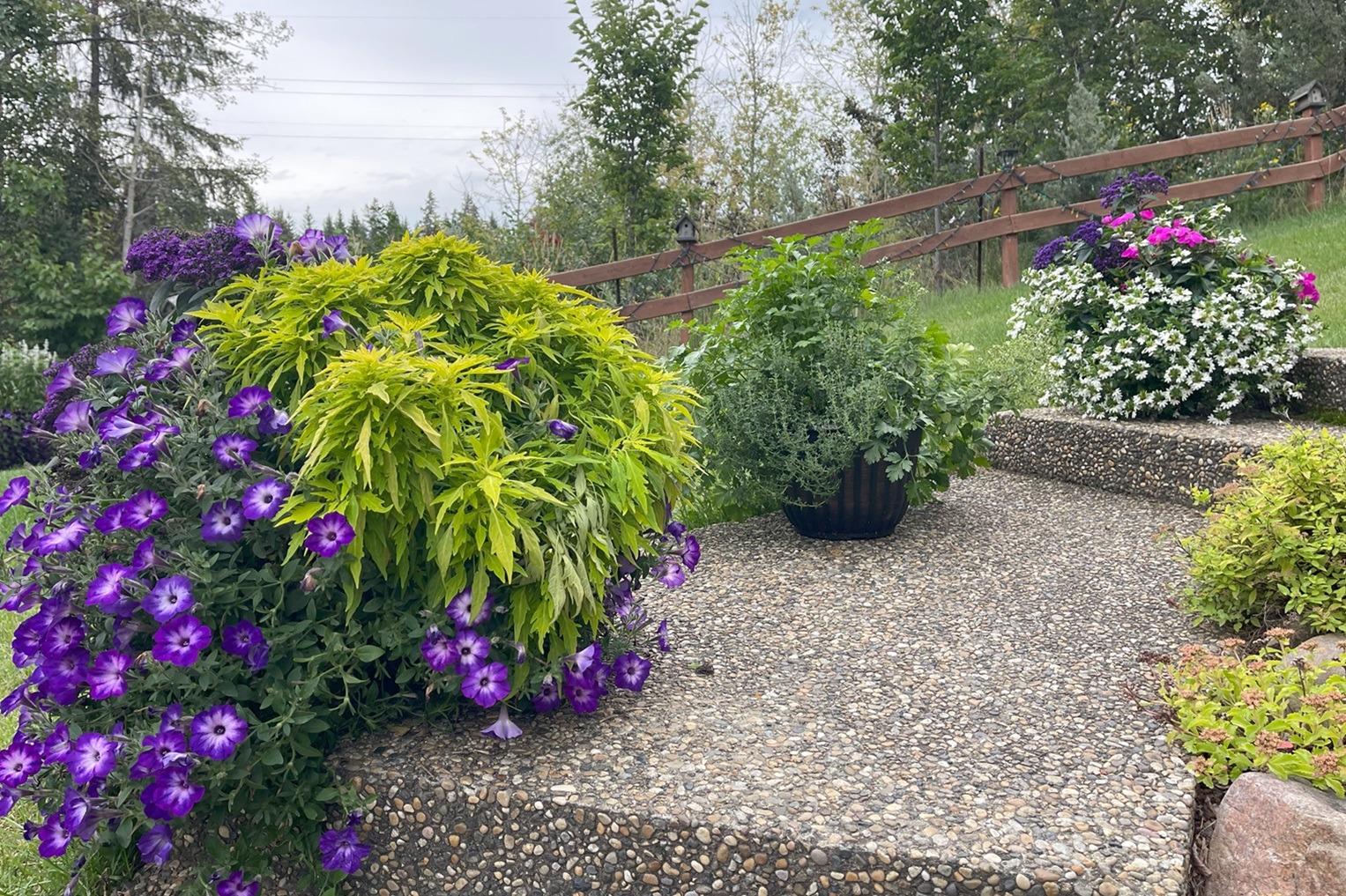
Planters and containers are all over the map as to how much water they catch when it rains.
Some collect waaay more water than we think they will and others, significantly less.
Because of this, I never take container water catchment for granted and I check them regularly.
How I assess planter hydration depends on their size.
If the planter is small (35cm / 14″ or less), I either lift it or tilt it to judge how much it weighs. If it is heavy, I can skip watering; and if it is light, I give it a drink.
For large planters that can’t be moved (over 35cm / 14″), I insert the full length of my index finger to analyze its hydration. If the soil is dry at the tip or 1st knuckle of my finger, I water.
Planters & Window Boxes on Porches or Under Roof Eves
I check planters & window boxes on porches and tucked under roof eves and overhangs daily because, in their sheltered position, they don’t catch any rain and they may need a little topping up.
Planters & Containers Out in the Garden
Planters out in the open garden could be too wet or too dry, so I check these daily, too.
Make sure that your pots and planters have drainage holes and empty the drip trays to allow the container to continue draining.
If planters get too wet and they are light enough to move, relocate them to a sheltered location out of the rain to allow them the opportunity to dry down.
The Good News About Rainy Days
When it comes to flowerbeds and containers living in the rain, the upside is that rainy days are cooler and plant metabolism slows, so the plants won’t stress if they get a little dry. Just keep an eye on them and make sure you water plants when you notice any signs of wilting and they should be fine!
For more tips on gardening, check out my other blogs or sign up for my newsletter!
More to Explore
- 6 Ways to Care for Your Garden in Hot, Dry Weather
- What is Mulch? Making Garden Magic with Mulch
- How to Understand Fertilizer Labels
- Home Garden Irrigation Options
- How to Prepare Your Garden for Winter
- How to Put Away Hoses and Rain Barrels in the Fall
©Sharon Wallish Murphy ©Gardening with Sharon







